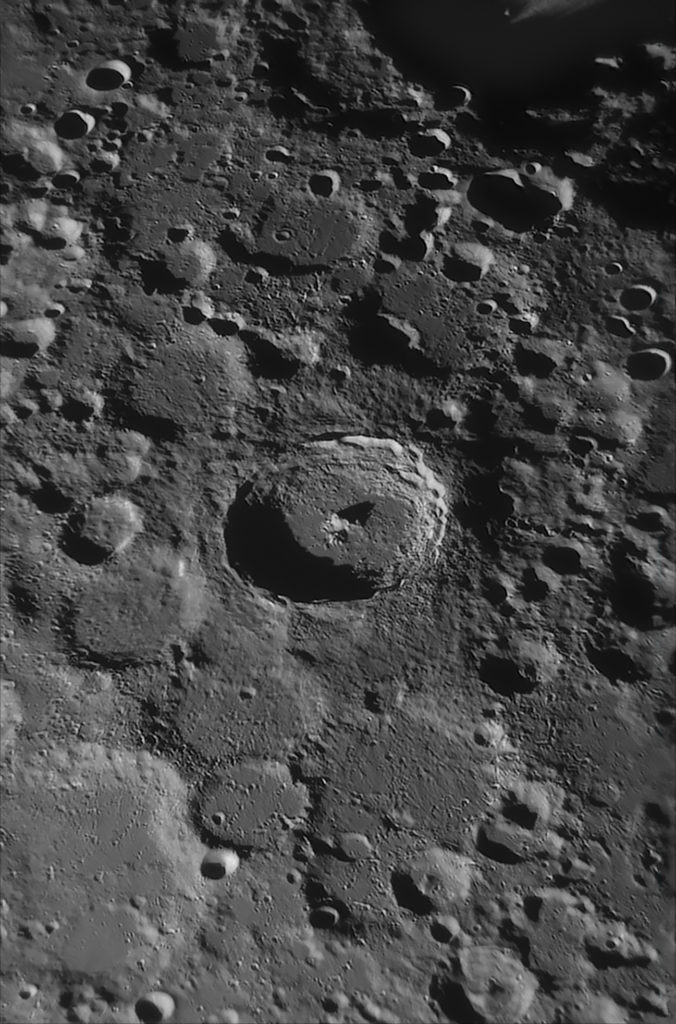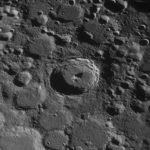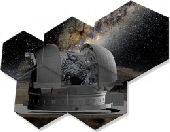Italian Language (for English, please read further below):
Dopo tanto tempo, rieccomi finalmente con una nuova immagine lunare, tratta da una sessione di riprese in cupola effettuate insieme all’amico Mario Lauriano che mi è venuto a trovare per l’occasione e con cui abbiamo effettuato una sessione lunare di prova.
Il soggetto di questa immagine, ripresa alla lunghezza d’onda di 715nm tramite filtro Schott RG-715 long-pass, è il cratere lunare “Tycho”, uno dei più rinomati crateri da impatto visibili sulla Luna, la cui raggiera dovuta al violento quanto potente impatto, risulta addirittura visibile da Terra ad occhio nudo. Per vedere il cratere vero e proprio, è necessario almeno un piccolo binocolo che restituisca qualche ingrandimento (tipicamente almeno 5x o più) rispetto alla visione oculare senza alcuno strumento.
Tycho è un cratere con un diametro di circa 85km e un’età stimata in circa 108 milioni di anni. L’asteroide dal cui impatto è stato generato il cratere doveva essere grande quasi quanto quello che causò l’estinzione dei Dinosauri, circa 65 milioni di anni fa.
Nell’immagine, che è orientata con il Sud in alto ed ha una risoluzione al di sotto del Km, si possono notare (da sinistra in basso, in senso orario) i crateri: Orontius (parziale), Pictet, Street, Longomontanus (quello in ombra, all’estremo bordo in alto a destra, su cui sta sorgendo il Sole), oltre ovviamente al cratere Tycho esattamente al centro dell’immagine.
Grazie per la Vs cortese attenzione e “ad maiora, semper…”
Dettagli Tecnici:
Celestron C14 StarBright ad F/22 – Baader-Zeiss Abbe Barlow 2x – Schott RG-715nm filter – GS3-U323S6M-C camera – Seeing max 6,5/10 @ 715nm band – sito: Palermo @ my personal Observatory.
English Language:
After a long time, finally I’m back with a new lunar image, taken from a session shots taken with my friend Mario Lauriano who came to see me for the occasion and with we had a lunar test session.
The subject of this image, taken at a wavelength of 715nm by Schott RG-715 long-pass filter, is the lunar crater “Tycho”, one of the most famous impact craters visible on the Moon, whose rays are due to the violent powerful impact, it is even visible from Earth to the naked eye. To see the actual crater, you need at least a small binocular to return some magnification (typically at least 5x or more) compared to the ocular vision without any optical instrument.
Tycho is a crater with a diameter of about 85km and an estimated age of about 108 million years. The asteroid from which the crater was generated must have been almost as big as the one that caused the extinction of the Dinosaurs, about 65 million years ago.
In the image, which is oriented with the South at the top and has a resolution about of below the Km, you can see (from left to bottom, clockwise) the craters: Orontius (partial), Pictet, Street, Longomontanus (the one in the shade, at the extreme edge at the top right, on which the Sun is rising), besides obviously the Tycho crater exactly at the center of the image.
Thank you for your kind attention and …“ad maiora, semper “
Techical data:
Celestron C14 StarBright @ F/22 – Baader-Zeiss Abbe Barlow 2x – Schott RG-715nm filter – GS3-U323S6M-C camera – Seeing max 6,5/10 @ 715nm band – site: Palermo @ my personal Observatory.


